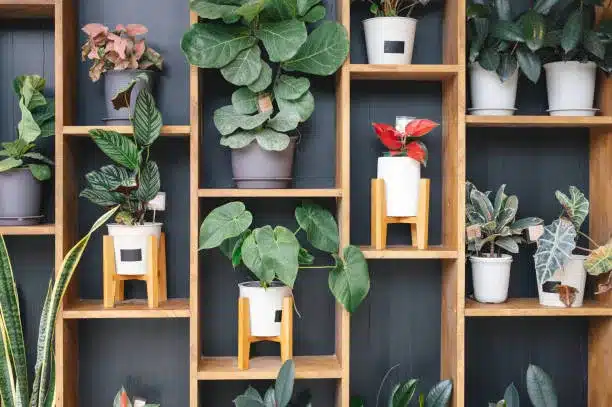Are you someone who loves the idea of indoor greenery but finds plant care a tad intimidating? Ever wondered if there are plants that’ll forgive you for those times you forget them in the hustle and bustle of life? You’re in the right place! In this article, “5 Easy Grow House Plants For Neglectful Gardeners,” we’re about to delve into the magical world of resilient plants that thrive on minimal care.
Whether you’re perpetually busy, a tad forgetful, or just starting out on your green journey, we have you covered. We’ll answer questions like, “Which plants are the most forgiving?” and “How can I keep them thriving with minimum effort?” The best part? These plants won’t just survive—they’ll flourish, providing that serene, nature-infused ambiance you desire.
Dive in now to discover these fuss-free plants and transform your space with nature’s undemanding gems!
Easy Grow House Plants
In the bustling tapestry of life, not everyone possesses a green thumb. Enter: easy-grow house plants. These botanical wonders ask for little but give back much.
Indoor plants don’t just elevate a room’s aesthetics; they are silent warriors that purify our air, boost our mood, and even enhance productivity. But what if you’re a gardener whose plants often feel “left on read”? Fear not! This guide is tailor-made for the well-intentioned, occasionally neglectful gardener.
We aim to introduce you to the world of low-maintenance indoor plants that will patiently await your attention, ensuring your space remains a lush, vibrant sanctuary.
Why Choose Easy Grow House Plants?
Forgiveness Level: 100
Ah, the resilient wonders of the plant kingdom! For those of us who might occasionally space out on our botanical buddies, there’s a special league of plants that doesn’t hold grudges. These plants, often evolved from tough environments, are hardwired to survive, if not thrive, under conditions that might dismay their more delicate counterparts.
Here’s the forgiving nature of these plants broken down:
- Drought Tolerance: Forget to water them for a bit? These plants often store extra moisture in their leaves, stems, or roots, allowing them to go longer periods without hydration. They’ve basically got built-in water bottles!
- Light Flexibility: Whether you place them in a sunlit corner or a shady nook, many of these plants adapt. They don’t need a constant suntan to stay happy. Some even prefer the shade, like that one friend who avoids summer like the plague.
- Less Fussy about Soil: While some plants need their soil as specific as a barista’s coffee order, these forgiving plants are often content with what they get. Drainage is usually their only ask, but they’re not about to throw a fit over a little soil inconsistency.
- Resilient to Pests: These plants tend to be less appealing to common pests. Maybe it’s their rugged nature or perhaps pests just know better than to mess with the tough ones.
- Slow Growth: Many grow at a pace that would make a snail proud. This means they don’t outgrow their pots quickly and don’t need frequent repotting.
In essence, these forgiving plants understand life gets busy. They’re the low-maintenance friends in your plant circle, always there, always understanding, and requiring minimal fuss to flourish.
related article – 5 easy DIY vertical Garden systems
Are you ready to elevate your gardening game to new heights? If you’ve been longing for a unique and space-efficient way to grow your plants, then you’re in for a treat. In this blog post, we’ll dive into the fascinating world of DIY vertical garden systems. These ingenious setups maximize your growing space and add … Read More >>
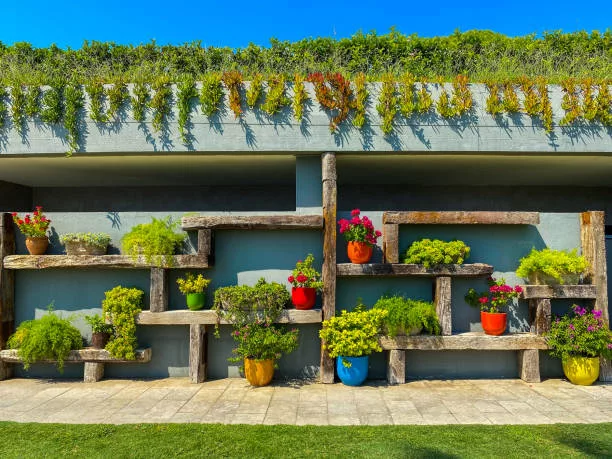
Green Thumb Not Required
To all the budding gardeners out there feeling a touch overwhelmed, take a deep breath and let that apprehension melt away. The world of easy-grow house plants is as welcoming as a cozy, sunlit nook on a cold day. These plants have a knack for understanding beginners, and here’s the best part: they don’t expect you to be a plant whisperer.
There’s no secret handshake, no cryptic manual, and definitely no prerequisite of having a “green thumb.” These plants thrive on simplicity. Think of them as the starter pack to gardening. They’re resilient, adaptable, and won’t give you the cold shoulder if you fumble a bit in the beginning.
Remember, every expert was once a beginner. With these forgiving plants, the learning curve is gentle and rewarding. So, step into this green adventure with confidence. These plants aren’t looking for experts; they’re looking for friends. And in you, they’ve found one. Welcome to the effortless joy of indoor gardening!
1. Snake Plant (Sansevieria trifasciata)
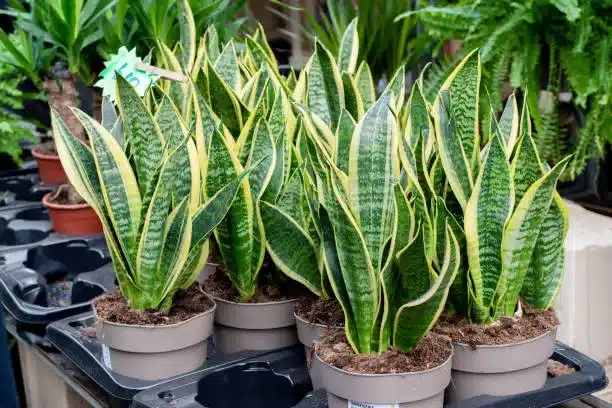
Overview
The Snake Plant, also known as Sansevieria trifasciata, boasts a fascinating array of features that make it a favorite among plant enthusiasts. Here are some quick facts to get acquainted:
- Origin: Native to West Africa, particularly Nigeria and Congo.
- Appearance: Upright, sword-like leaves with sharp tips. The leaves have varying patterns, often in shades of green, yellow, and gray.
- Varieties: There are numerous types, including ‘Laurentii’ with yellow-edged leaves, and the compact ‘Hahnii’ which forms a rosette.
- Low Maintenance: One of the hardiest house plants around, it’s renowned for its ability to tolerate neglect.
- Air Purification: NASA’s Clean Air Study identified it as one of the top air-purifying plants. It uniquely converts CO2 into oxygen even at night.
- Watering: Prefers to be on the dry side. Overwatering is its nemesis.
- Light: Adaptable! While it appreciates indirect light, it can tolerate low light conditions as well.
- Toxicity: Take note, pet owners. The Snake Plant is toxic to cats and dogs if ingested.
- Nicknames: Due to its appearance and toughness, it’s earned monikers like ‘Mother-in-Law’s Tongue’ and ‘Viper’s Bowstring Hemp’.
- Growth: Can grow up to 2 meters, but indoor varieties typically range between 30cm and 120cm.
With its sculptural beauty and almost indestructible nature, the Snake Plant is a true gem for both novice and veteran plant lovers. Just plant it, and (almost) forget it!
Care Guide
When it comes to care, the Snake Plant has a low-maintenance regimen that even the most neglectful gardeners would appreciate. Let’s dive deeper into its care requirements:
Watering:
- Frequency: The Snake Plant has an ‘easy come, easy go’ approach to water. This means it can go weeks without it. Its thick, succulent-like leaves store water, allowing it to withstand drought.
- Guideline: The best practice is to water it thoroughly and then allow the soil to dry out completely before watering again. This plant would rather be under-watered than over-watered. Think of it as a camel in the plant world!
Light:
- Tolerance: If there were a poster child for “Low Light Champion,” it’d be the Snake Plant. It doesn’t fuss if it’s not placed in a sunlit spot. In fact, direct sunlight might be too much for it.
- Ideal Conditions: While it can survive in low light, it thrives best in indirect sunlight. Place it in a room with a window, but not directly in the window’s blazing path.
Soil:
- Preference: This plant detests having ‘wet feet’. What it loves is a well-draining soil mix. This ensures that its roots are not sitting in water, preventing root rot.
- Mix: Consider using a cactus or succulent mix. Alternatively, you can create your own blend using regular potting soil with some sand or perlite added for better drainage.
In essence, the Snake Plant asks for very little. Just a bit of water every now and then, some indirect light, and the right soil. Treat it right, and it will reward you with its bold, architectural beauty for years to come. It’s truly the friend who asks for little but gives back so much!
Benefits
The Snake Plant, often hailed as the silent guardian of our indoor spaces, offers a range of benefits that extend beyond its striking aesthetics. Let’s dive into two of its standout features: air purification and its unique ability to boost oxygen at night.
Air Purification:
- Pollutant Fighter: The Snake Plant has an impressive ability to absorb indoor air pollutants, including formaldehyde, benzene, and xylene. This makes it an ideal roommate, especially in spaces where there’s limited ventilation or in city homes where air quality might be compromised.
- How It Works: Through a process called phytoremediation, the Snake Plant filters out harmful toxins, taking them up into their roots and leaves and either storing or transforming them into less harmful substances.
Boosting Oxygen at Night:
- Photosynthesis 24/7: Unlike most plants, which absorb carbon dioxide and release oxygen only during the day, the Snake Plant has a unique ability to perform photosynthesis at night. This means it’s one of the few plants that can convert CO2 into oxygen even after sundown.
- CAM Photosynthesis: This nocturnal oxygen production is due to a process called Crassulacean Acid Metabolism (CAM) photosynthesis. Most plants shut this process down at night, but the Snake Plant keeps the oxygen party going.
- Bedroom Buddy: Given this characteristic, it’s an excellent plant to keep in the bedroom. While it won’t replace the need for proper ventilation, having a Snake Plant around can provide a small but steady supply of fresh oxygen as you sleep.
In summary, the Snake Plant doesn’t just sit there looking pretty. Behind those upright, sword-like leaves is a plant working overtime to make your indoor space a little fresher, a tad healthier. It’s like having a silent, green superhero in your corner, ensuring every breath you take is just a bit purer. So, the next time you glance at your Snake Plant, remember, it’s busy looking out for you, day and night!
Wit & Wisdom
Did you know the Snake Plant is also called the “Mother-in-Law’s Tongue”? Perhaps because it’s sharp and has a lot to say… but unlike some in-laws, it only needs minimal attention and won’t hold a grudge if you forget about it for a while! 😉🌿🐍
(Always delivered in good humor and with the utmost respect to all the lovely mothers-in-law out there!)
2. Money Plant (Epipremnum aureum)
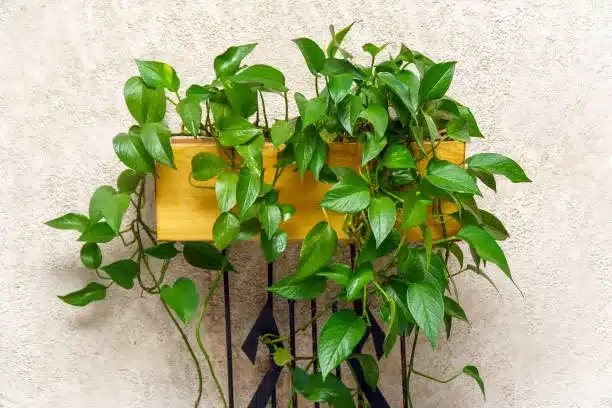
Overview
The Money Plant, scientifically known as Epipremnum aureum and often colloquially dubbed the “Golden Pothos” or “Devil’s Ivy”, is steeped in intrigue and a touch of mystique.
Origins and Habitat:
- The Money Plant has its roots (pun intended!) in the Solomon Islands, a collection of islands in the Pacific Ocean. It’s a tropical climber, and in its natural habitat, it tends to scale up trees in search of sunlight.
Cultural Significance:
- The name “Money Plant” sparks imaginations of wealth and prosperity. Many believe it to be a symbol of good luck and financial fortune. While its actual ability to draw wealth is debatable, it’s certainly a prosperous addition to homes in terms of aesthetics and charm.
Appearance:
- Boasting heart-shaped, glossy leaves with a captivating green hue often variegated with yellow or cream streaks, it’s a true visual treat. Over time, with proper care, it can trail or climb, making it a versatile piece for various decor styles.
Popularity:
- The Money Plant’s fame isn’t merely based on superstitions. Its hardy nature, adaptability to various lighting conditions, and the cascading beauty of its vines make it a favorite among both novice and seasoned plant enthusiasts.
So, while there’s no scientific evidence that the Money Plant will pad your wallet, its vibrant growth and lush appearance will definitely enrich your living space, making every corner it graces feel like a million bucks!
Care Guide
The Money Plant, with its lush and vibrant vines, may appear high-maintenance at first glance. However, its care regimen is pleasantly uncomplicated. Let’s delve into the specific care needs of this leafy gem:
Watering:
- Tolerance: The Money Plant’s ‘go with the flow’ attitude extends to its watering needs. Thanks to its semi-succulent nature, it stores some water in its stems and leaves, granting it the resilience to weather periods of drought.
- Guideline: While it’s forgiving, this doesn’t mean you should make it a desert dweller. Water when the top 1-2 inches of soil feels dry. Over-watering can lead to root rot, so it’s a good practice to err on the side of caution. Imagine it saying, “A little sip now and then is great, but I’m not keen on swimming!”
Light:
- Versatility: Few houseplants can boast the light adaptability that the Money Plant offers. From the shaded understories of the Solomon Islands, it has evolved to be incredibly flexible.
- Ideal Conditions: While it can tolerate a range of lighting conditions, from low light to bright indirect light, it’s best to avoid harsh direct sunlight. Too much sun can bleach its vibrant leaves, while too little might reduce the variegation. A spot with filtered sunlight, perhaps through a sheer curtain, works wonders for this plant.
Soil:
- Preference: The Money Plant isn’t overly picky, but it thrives in well-draining, peaty soil. This type of soil offers the right balance of moisture retention and drainage, ensuring the plant’s roots remain healthy and rot-free.
- Mix: You can use a standard houseplant mix with added perlite or sand for enhanced drainage. Alternatively, many garden centers offer pre-mixed potting soils designed for tropical plants, which would be perfect.
In a nutshell, the Money Plant is like that friend who’s easy to hang out with – not too fussy and always adaptable. Give it a decent spot, remember to water occasionally, and it’ll reward you with a lush cascade of green, reminding you of the simple joys of plant parenthood.
Benefits
The Money Plant, while modest in its needs, certainly doesn’t hold back when it comes to the benefits and charm it brings to any living space. Let’s delve into a couple of its standout attributes:
Attractive to Look At:
- Visual Appeal: With its glossy, heart-shaped leaves that often boast captivating streaks of gold, cream, or white, the Money Plant is a true head-turner. Whether cascading from a hanging pot, climbing a moss pole, or simply trailing along a bookshelf, its vibrant green foliage adds a touch of tropical splendor to any room.
- Versatility in Decor: Its aesthetic appeal is so versatile that it can seamlessly fit into various decor styles, from bohemian to contemporary, rustic to minimalist. Think of it as the perfect green accessory that never goes out of style!
Believed to Bring Prosperity and Luck:
- Cultural Significance: The name “Money Plant” isn’t just a fancy moniker. In many cultures, especially within Asian communities, it’s believed to usher in wealth, prosperity, and good luck. It’s a common gift during housewarming events or business openings, symbolizing wishes of financial success and prosperity.
- Feng Shui: In the realm of Feng Shui, the Money Plant, especially when placed in the southeast part of homes or offices, is believed to activate positive energy related to wealth and abundance.
- Symbol of Growth: Beyond the realm of superstition, the rapid and lush growth of the Money Plant can be seen as a metaphor for personal growth and progression. As the plant flourishes, it serves as a visual reminder of prosperity and the potential for growth in various aspects of one’s life.
So, while we can’t guarantee that the Money Plant will multiply your bank balance, it’s sure to enrich your space both aesthetically and symbolically. Who wouldn’t want a green friend that’s easy on the eyes and carries with it a message of hope, growth, and abundance?
Wit & Wisdom
While the Money Plant is believed to attract wealth, I’ve yet to find dollar bills among its leaves. But hey, who needs a money tree when you’ve got this green gem making you feel rich in ambiance and plant-parent pride? Remember, it’s all about the little green joys, not just the greenbacks!
3. Pothos (Epipremnum aureum)
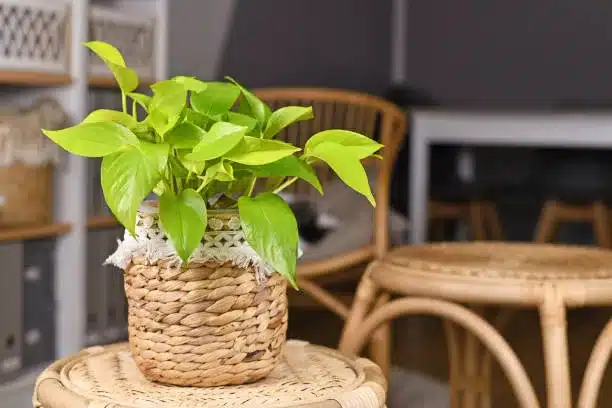
Overview
The Pothos! Often mistaken for its luxurious cousin, the Philodendron, the Pothos is a household favorite that’s both forgiving to beginners and captivating to plant aficionados. Let’s dive into the world of Pothos and explore its different shades:
The Pothos Lowdown:
- Origin Story: Hailing from the tropical regions of the Solomon Islands, the Pothos has since voyaged to homes worldwide, charming dwellers with its cascading vines and heart-shaped leaves.
- Other Names: Often going incognito under names like “Devil’s Ivy” (because it’s almost impossible to kill) or the “Golden Pothos” (for its sun-kissed variegations), this plant has a knack for catching attention.
Varieties Aplenty:
- Golden Pothos: The classic! With its heart-shaped leaves featuring green and gold variegation, it’s the most recognized variety.
- Marble Queen Pothos: A true royal with creamy-white and green marbled leaves. It’s slightly more demanding in its need for light to maintain the variegation.
- Neon Pothos: This one’s for the bold-hearted! Sporting vibrant, almost neon-green foliage, it’s a lively addition to any plant collection.
- Jade Pothos: Going all green, the Jade is a pure, solid green variety. It’s often more robust and grows a bit more vigorously than its variegated siblings.
- Silver Satin Pothos: A touch mischievous, as it’s not a true Pothos (but rather a Scindapsus). It flaunts silvery-green leaves that shimmer with a satin finish.
- Cebu Blue Pothos: Another stunning variant with elongated, arrow-shaped leaves that have a unique blue-green hue.
While each variety has its unique flair, they all share the quintessential Pothos charm: easy care, adaptable growth, and an uncanny ability to brighten up any space. Whether you’re just starting your green journey or looking to add another shade of Pothos to your collection, there’s a Pothos out there with your name on it—literally and figuratively!
Care Guide
When it comes to care, the Pothos is like that chill friend who’s always down for anything but never demanding. Here’s the lowdown on keeping this plant pal happy:
Watering:
- Flexible Hydration: The Pothos, with its semi-succulent traits, doesn’t throw a fit if you forget a watering session… or two. Its ability to tolerate drought comes from its water-storing capabilities, a true survivalist trick it’s picked up.
- Guideline: Though it’s forgiving, the Pothos appreciates a drink when the top 1-2 inches of its soil dries out. Drowning it, however, is a no-no. Wait for its soil to hint at dryness before reaching for that watering can. Essentially, it’s playing hard to get, but in a cute, plant-y way!
Light:
- Easy-going Glow: Sun worshipper? Not really. The Pothos is more the type to lounge in the shade with a good book. While it’s adaptable, it truly thrives in low to medium light conditions.
- Shade Lover: Direct sunlight can be a tad harsh for this plant, causing its leaves to bleach or get sunburned. It’s content with ambient room light, making it perfect for interiors with limited natural light. A filtered light scenario, like behind a sheer curtain, is its jam.
Soil:
- Not Picky: The Pothos isn’t one for a gourmet meal. When it comes to soil, as long as it’s well-draining, it’s game. Soggy roots can lead to root rot, so drainage is key.
- Mix Master: While it’s easy-going, opting for a well-draining potting mix—like those used for cacti or succulents—can give it a boost. Mixing in some perlite or sand to a regular potting mix can also do the trick.
In a nutshell, the Pothos is that no-fuss, always radiant buddy you can lean on. Give it some shade, water it when you remember, and make sure its feet aren’t wet, and it’ll serenade you with lush, trailing vines. It’s like the plant version of “low effort, high reward”!
Benefits
The Pothos, aside from being a visual delight, comes with an array of practical perks. Let’s explore two of its standout qualities:
Air Purifier:
- Silent Cleaner: The Pothos, with its vast leaf surface area, excels at purifying indoor air. It’s particularly adept at removing common indoor pollutants like formaldehyde, benzene, and xylene. So, while it’s adding beauty to your space, it’s also detoxifying the air you breathe—one leaf at a time!
- NASA Stamp: In NASA’s Clean Air Study, the Pothos was listed as a top air-purifying plant. While it won’t replace the need for regular room ventilation, having a Pothos around is like employing a silent, green janitor to keep your indoor air fresh.
Easy to Propagate:
- Plant Multiplication: Ever wanted to clone something? With Pothos, you can (kind of)! It’s among the easiest houseplants to propagate, making it a joy for those wanting to multiply their green family or gift a plant cutting to a friend.
- The How-To:
- Snip: Take a 4-6 inch cutting just below a leaf node (where a leaf meets the stem).
- Root: Place the cutting in water, ensuring the node is submerged. Within a few weeks, you’ll see roots emerging.
- Plant: Once the roots are a couple of inches long, plant your Pothos cutting in soil, and voila—a new plant is born!
- Sharing is Caring: Given its propagation ease, Pothos makes for a heartwarming and personal gift. A plant baby from your own collection carries a special touch.
In essence, the Pothos isn’t just a pretty face; it’s a green multitasker! Cleaning your air and making plant parenthood a breeze by being super propagate-friendly. It’s the gift that truly keeps on giving, whether to your lungs or your plant-loving friends.
Wit & Wisdom
The Pothos might just be the plant world’s best “grow-getter”—always climbing, always thriving, and always making every corner look vine-tastic!
4. Peace Lily (Spathiphyllum)
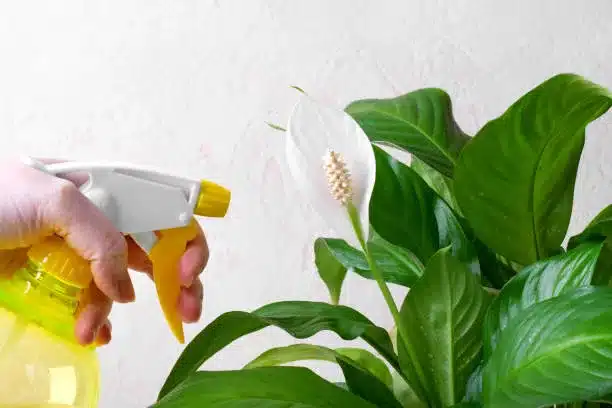
Overview
The Peace Lily, scientifically known as Spathiphyllum, is a graceful, elegant plant renowned for its simplicity and the serene beauty it brings to any space.
Distinct Features:
- Flowers: The Peace Lily’s standout feature is its unique “flower,” which is actually a white, spoon-shaped spathe that surrounds a yellow or white spadix. This bloom, with its pure hue, lends the plant its peaceful aura.
- Leaves: Deep green, glossy, and lance-shaped, the foliage of the Peace Lily adds a touch of tropical vibrancy even when the plant isn’t blooming.
Care: Notoriously low-maintenance, the Peace Lily doesn’t demand a lot. It’s forgiving to forgetful waterers and can tolerate lower light conditions, making it a favorite for indoor plant enthusiasts.
Symbolism: Beyond its aesthetic appeal, the Peace Lily often symbolizes peace, purity, tranquility, and hope. It’s a popular choice for sympathy gifts, bringing a message of hope and rebirth during challenging times.
In essence, the Peace Lily is more than just a pretty plant. It’s a symbol, a gesture, and a beautiful addition to homes that promises a peaceful coexistence.
Related Article – 20 Affordable Backyard Ideas For Under $40
Are you tired of looking at your bland backyard, wishing you had a space you could enjoy without breaking the bank? Well, I have great news for you! In this article, I will share 20 incredible and affordable backyard ideas that will transform your outdoor space for under $40. Have you ever wondered how to … Read More >>

Care Guide
The Peace Lily, with its graceful aura and delicate blooms, has a reputation for being a resilient companion. Here’s a concise breakdown of its care requirements:
Watering:
- Understanding Underwatering: Unlike some divas in the plant world, the Peace Lily is quite understanding. While it loves consistent moisture, it’s also notably tolerant of occasional underwatering. If you forget a watering session, the plant might droop a bit, giving you a subtle nudge (or dramatic reminder) that it’s thirsty.
- Guideline: It’s best to water the Peace Lily when the top inch of soil feels dry. Wait for it to almost wilt, then water thoroughly. Overwatering can harm it more than its opposite, so keep an eye out for soggy soil.
Light:
- Shady Business: The Peace Lily isn’t one to sunbathe. Originating from the rainforest’s understory, it’s naturally adapted to lower light conditions.
- Ideal Conditions: While it can manage in lower light, to see it truly thrive and bloom, give it a spot with bright, indirect sunlight. A location near a window with sheer curtains or a bit away from direct sunlight is its happy place. Too much direct sun, and its leaves might protest with yellowing or brown spots.
Soil:
- Breathable Base: Just like us, the Peace Lily appreciates a good breath of air—especially around its roots.
- Mix Matters: Opt for a well-aerated, light potting mix. Combining regular potting soil with some perlite or orchid bark can create the perfect environment. This ensures the roots get plenty of oxygen and prevents waterlogging, which this plant isn’t fond of.
All in all, the Peace Lily is like that elegant friend who, despite looking high-maintenance, is actually pretty chill and easy-going. A bit of water, a shady spot, and some airy soil, and you’ve got a happy, blooming buddy!
Benefits
The Peace Lily isn’t just another pretty face in the plant world. Beyond its graceful presence, it boasts significant benefits that enhance our living spaces. Here’s a closer look:
Blooms Beautiful Flowers:
- Elegance Personified: The Peace Lily’s blooms, with their pristine white spathes and contrasting spadix, are the epitome of elegance. These radiant “flowers” (which are technically modified leaves) can elevate the aesthetics of any room, adding a touch of nature’s sophistication.
- Symbolism: Often representing peace, purity, and rebirth, the flowers are more than just visually appealing; they carry deep, resonant meanings. Their serene appearance can bring calmness and tranquility to spaces, making them a favorite choice for homes and offices.
Excellent Air Cleaner:
- Silent Purifier: The Peace Lily does more than just sit pretty. It’s an active participant in improving indoor air quality. Several studies, including NASA’s Clean Air Study, have highlighted its prowess in removing common indoor pollutants like ammonia, benzene, formaldehyde, and trichloroethylene.
- Oxygen Boost: Like other plants, the Peace Lily also contributes to increasing oxygen levels during the day. Its unique ability to purify air makes it a dual benefit plant – it not only makes spaces look better but also makes them healthier to breathe in.
- Humidity Helper: The Peace Lily is known to help increase humidity levels in its vicinity, thanks to its transpiration process. This can be beneficial in dry indoor environments, helping to keep respiratory ailments at bay.
In summary, the Peace Lily is a dynamic duo of beauty and functionality. It graces spaces with its stunning blooms while silently working to purify the air around. It’s like having a piece of art that also looks out for your well-being. Pure, peaceful, and perpetually beneficial!
Wit & Wisdom
Did you know that despite its elegant name, the Peace Lily isn’t actually a lily at all? It’s like the plant world’s version of a stage name! So, while it might be rocking the “Lily” title, it’s more like a distant cousin who loves to attend family reunions and confuse everyone. Talk about an identity crisis in the plant kingdom!
5. Jade Plant (Crassula ovata)
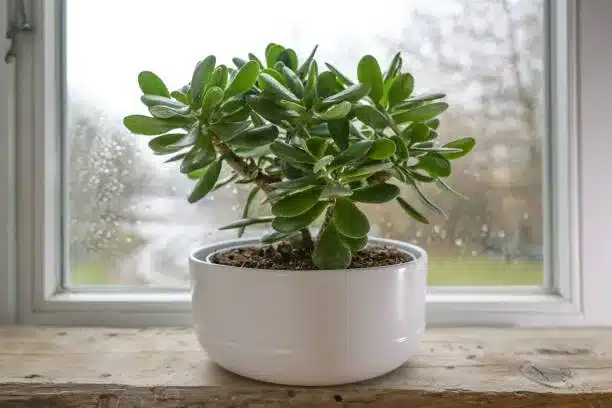
Overview
The Jade Plant, scientifically referred to as Crassula ovata, is a much-loved staple in many homes and gardens. It’s not just a plant; it’s a blend of botanic beauty and cultural symbolism.
Origins and Appearance:
- Hailing from South Africa, the Jade Plant has made itself at home globally with its compact, bushy form and distinct, glossy green leaves.
- These succulent leaves, often shaped like small ovals or spoons, store water, giving the plant a plump appearance. Mature plants may even produce small pink or white star-shaped flowers.
Care:
- As a succulent, the Jade Plant thrives on neglect. It prefers periods of drought over being constantly drenched.
- While it can tolerate indirect light, it truly thrives in bright light, and this can even encourage it to flower.
Symbolism:
- Its name itself is a clue. Much like the precious jade stone, this plant is often associated with prosperity, wealth, and good luck.
- In some cultures, particularly within the Chinese community, Jade Plants are often gifted for housewarming events, symbolizing wishes of growing wealth and prosperity for the homeowner.
- Its other nicknames include Money Tree, Dollar Plant, and Friendship Tree, further emphasizing its association with prosperity and relationships.
Trivia:
- In Feng Shui, the Jade Plant is believed to activate financial energies. When placed in the southeast of a home or room – the “Wealth Area” – it’s thought to bring prosperity and success.
Whether you’re drawn to the Jade Plant for its aesthetic appeal, easy-care regimen, or its rich symbolism, it stands as a testament to nature’s ability to blend beauty, resilience, and meaning in one compact package.
Care Guide
Often heralded as a plant that thrives on “benign neglect”, the Jade Plant is every low-maintenance gardener’s dream. Despite its delicate appearance, it comes with a set of straightforward care instructions. Here’s a concise guide:
Watering:
- Less is More: At its core, the Jade Plant is a succulent, and like its desert-dwelling brethren, it’s evolved to hoard water in those chubby leaves of its. This makes it remarkably drought-tolerant.
- Guideline: Wait for the soil to dry out thoroughly between waterings. When you do water, do so deeply and ensure excess water doesn’t sit at the bottom. This plant is a bigger fan of dry spells than it is of waterlogged roots. If in doubt, it’s usually safer to underwater than overwater.
Light:
- Sunny Disposition: This isn’t the plant for that dim, forgotten corner of your home. The Jade Plant craves the sun and flourishes in an environment that mimics its native, sunny habitat.
- Ideal Conditions: A spot with full sunlight is the Jade Plant’s sweet spot. While it can tolerate some shade, to keep it in prime condition and encourage potential blooms, ensure it basks in several hours of sunlight daily.
Soil:
- Drain Game Strong: Sitting in soggy soil is the Jade Plant’s nightmare. What it yearns for is a well-draining soil where its roots can breathe and not be perpetually drenched.
- Mix Matters: Consider using a cactus or succulent soil mix. If you’re feeling DIY-ish, a blend of regular potting soil with added sand or perlite will also keep your Jade happy and rot-free.
In essence, the Jade Plant’s care mantra is simple: bask in the sun, sip water sparingly, and stand on light, airy soil. Treat it right, and this green gem will not just survive but thrive, potentially blessing you with its charming blooms as a thank you note.
Benefits
The Jade Plant, with its glossy green leaves, is more than just an ornamental addition to households and gardens. It seamlessly combines symbolic depth with a carefree attitude. Here’s why:
Considered a Symbol of Good Luck:
- Fortune’s Favorite: There’s a reason this plant often goes by names like “Money Tree” or “Dollar Plant.” The Jade Plant, especially in Asian cultures, is synonymous with prosperity, wealth, and good fortune. Its vibrant green leaves are reminiscent of jade coins, symbols of wealth and prosperity.
- Gift of Good Omen: Gifting a Jade Plant is considered auspicious. It’s a common present for housewarming events or business inaugurations, conveying wishes of success, wealth, and positive energy.
Requires Minimal Care:
- Low Maintenance Maestro: Don’t let its rich symbolic meaning fool you into thinking it demands royal treatment. The Jade Plant is as low-key as they come. As a succulent, it’s hard-wired to survive and even thrive under neglect.
- Independent Streak: With its ability to store water in its leaves, it won’t sulk if you forget to water it for a while. It’s almost like that self-reliant friend who values your company but doesn’t always need your attention.
In sum, the Jade Plant is the perfect blend of meaning and ease. It stands as a beacon of prosperity, while its care routine doesn’t break a sweat. Whether you believe in its good luck charm or simply adore its appearance, it’s a plant that asks for little but gives back in abundance. A touch of luck with a sprinkle of ease—what more could a plant parent ask for?
Wit & Wisdom
Ever heard the saying, “Money doesn’t grow on trees?” Well, with the Jade Plant, it kind of does… just not in the way you might hope. While it might not sprout cash, it surely grows a wealth of charm and good vibes. So, if you’re looking for ROI in happiness, you’ve got the right investment!
Easy Grow House Plants General Care Tips
Watering Wisdom
Proper watering is both an art and a science. Too little and your plants thirst, too much and they drown. But don’t fret, with the right techniques, you’ll have your green pals thriving in no time!
1. Know Your Plant:
- Different plants have different water requirements. A cactus doesn’t drink like a fern. Familiarize yourself with the specific needs of each plant in your collection.
2. Use the Right Tools:
- Watering Cans: Ensure they have a long spout for even water distribution.
- Spray Bottles: Perfect for plants that love humidity. A light misting can make them very happy.
- Moisture Meters: If you’re unsure about when to water, these devices can tell you the moisture level of the soil.
3. The Finger Test:
- One of the easiest ways to check if a plant needs water is the good old finger test. Stick your finger into the soil up to the second knuckle. If it feels dry, it’s time to water.
4. Water Deeply and Thoroughly:
- Instead of frequent sips, most plants prefer a good soak, allowing the water to reach their deepest roots. Ensure that water runs out of the drainage holes, but always empty the saucer to prevent root rot.
5. Mind the Temperature:
- Plants prefer lukewarm water. Cold water can shock the roots. If tap water is too cold or contains too many chemicals, let it sit overnight to reach room temperature.
6. Overwatering vs. Underwatering:
- Overwatering is a common plant killer. Signs include yellowing leaves, moldy soil, and a musty smell. Underwatered plants look droopy and have dry, brown leaf tips.
7. Consider the Environment:
- Factors like light, temperature, and humidity play a role. Plants may need more frequent watering during hot, dry spells and less during cloudy or cooler days.
8. Watering Schedule? Maybe Not:
- While it’s tempting to set a strict watering schedule, it’s better to be responsive to your plant’s needs. Seasons change, indoor conditions vary, and what worked last month might not be ideal now.
9. Bottom Watering:
- For plants prone to mold or those with furry leaves, consider bottom watering. Sit the pot in a tray of water, allowing the roots to absorb moisture from the bottom up.
10. Adjust and Observe:
- Always be observant. If a technique isn’t working, adjust. Plants often communicate their needs, and with a keen eye, you’ll quickly learn to decipher their signals.
Remember, watering is more than just a routine; it’s a ritual, a moment to connect with your green buddies. With practice and patience, you’ll soon master the ebb and flow of your plants’ aquatic needs.
Let There Be Light
Just as we humans need food to thrive, plants hunger for light. It’s their primary energy source, essential for photosynthesis. But, much like our dietary needs, not all plants crave the same amount or type of light. Here’s a luminescent guide to understanding and providing the right light for your leafy friends.
1. Types of Light:
- Direct Sunlight: Bright and unfiltered, this light comes directly from the sun. It’s the type of light that casts sharp, defined shadows.
- Indirect or Filtered Light: This light is softened and diffused, either by a sheer curtain, a shade, or simply by distance from the window. Shadows under this light are soft and blurred.
- Low Light: These conditions are found farther away from natural light sources where details become hard to distinguish. It doesn’t mean no light; very few plants can survive in complete darkness.
2. Light Direction Matters:
- North-facing Windows: Offer soft, indirect light throughout the day. Ideal for plants that prefer lower light conditions.
- East-facing Windows: Provide bright, direct light in the morning, followed by indirect light for the rest of the day. Great for many common houseplants.
- South-facing Windows: These are the sunniest and brightest, offering direct light most of the day. Sun-loving plants thrive here.
- West-facing Windows: Give a good dose of direct afternoon sunlight, which can be intense and hot in the summer.
3. Plants’ Light Preferences:
- High Light Plants: Think of desert and tropical plants like cacti, succulents, and many flowering plants. They bask in full sunlight and thrive in its abundance.
- Medium Light Plants: These plants prefer bright, indirect light. Many common houseplants, like Pothos and Peace Lilies, fit this category.
- Low Light Plants: These are often plants from the forest understory, like the ZZ plant or Snake Plant. They’ve evolved to make do with dappled light.
4. Signs Your Plant Isn’t Getting the Right Light:
- Too Much Light: Leaves may get sunburned, turning brown or bleached with a crispy texture. Growth can become leggy as the plant stretches towards light.
- Too Little Light: Plants may become leggy as they stretch out seeking more light. Leaves might turn yellow and drop, or new leaves could be smaller than usual.
5. Adjusting Light Conditions:
- If your plant isn’t thriving, consider moving it to a brighter or shadier spot, depending on its symptoms. Rotation is key—turn your plants occasionally to ensure all sides get even light.
6. Artificial Lighting:
- Not all homes are blessed with abundant natural light. In such cases, grow lights can be a lifesaver. LED or fluorescent grow lights can supplement or even replace natural sunlight for many indoor plants.
To wrap it up, light is a lifeline for plants. By observing, understanding, and adjusting to your plant’s light needs, you’re setting the stage for a radiant, photosynthesizing performance. It’s all about finding that luminous sweet spot!
The Right Soil Matters
Soil isn’t just dirt; it’s the foundation of life for plants. The right soil mix can mean the difference between a thriving plant and one that’s just surviving. Here’s what you need to know about selecting the best soil for your green buddies:
1. Understand Your Plant’s Needs:
- Different plants require different soil structures. For instance, a cactus needs well-draining soil to prevent root rot, while ferns prefer a more moisture-retentive mix.
2. Basic Soil Components:
- Loam: This is the gold standard of soils. It’s a balanced blend of sand, silt, and clay. Loam is fertile and offers good water drainage along with moisture retention.
- Sand: Improves drainage and aeration. It’s gritty and doesn’t retain much water.
- Silt: Has a smooth texture and holds onto water longer than sand but offers less aeration.
- Clay: Dense and heavy, clay soil retains the most water, but this can also make it more prone to waterlogging.
3. Specialized Soil Mixes:
- Potting Mix: A general mix suitable for most indoor plants. It’s lighter than garden soil and usually contains a mix of peat moss, vermiculite, and perlite.
- Succulent & Cacti Mix: Designed for plants that hate wet feet, this mix has excellent drainage, usually made up of a blend of sand, perlite/pumice, and soil.
- Orchid Mix: Orchids require unique soil that mimics their natural tree-perching habits. This mix usually contains bark chips, charcoal, and some perlite or moss.
4. Soil Enhancements:
- Perlite: Volcanic glass that’s heated until it pops like popcorn. Lightweight and airy, it improves aeration and drainage.
- Vermiculite: Helps increase water and nutrient retention in soil.
- Compost: Decomposed organic matter that’s rich in nutrients. Great for adding fertility to soil.
- Peat Moss: Increases water retention and acidity in the soil.
- Coconut Coir: A sustainable alternative to peat moss, made from the husks of coconuts. It’s great for moisture retention.
5. Avoid Using Garden Soil Indoors:
- Garden soil can compact in pots, preventing roots from breathing. It might also harbor pests and diseases not suitable for indoor plants.
6. Consider Soil pH:
- Some plants have specific pH requirements. For instance, azaleas prefer acidic soils, while many succulents lean towards a more neutral pH. You can adjust soil pH with specialized amendments if needed.
7. Always Check for Drainage:
- No matter how perfect your soil mix, always ensure your pots have drainage holes. Even plants that enjoy moisture don’t like to sit in waterlogged soil.
8. Refresh Soil Periodically:
- Over time, soil breaks down and can become compacted or depleted of nutrients. Repotting or refreshing the soil every couple of years helps keep your plants healthy.
In a nutshell, understanding your plant’s individual needs and tailoring the soil to meet those needs is crucial. The right soil mix provides the best platform for growth, nutrition, and overall plant health. After all, happy roots make for a happy plant!
related article – How To Repot Your Christmas Cactus
Discover the mind-blowing secrets to successfully repotting Christmas cactus in this comprehensive guide from Our Gardening World. Learn the importance of choosing the right potting mix, timing the repotting process, and proper handling techniques. Uncover the step-by-step process to master the repotting technique and explore essential post-repotting care and maintenance tips. This expert article provides valuable … Read More
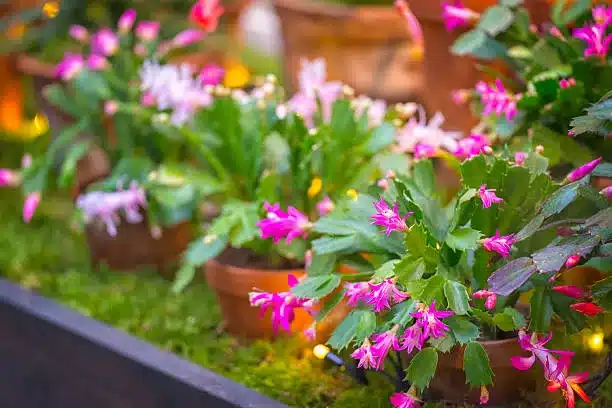
Easy Grow House Plants Conclusion
Let’s take a moment to leaf through our journey: From the resilient Snake Plant to the ever-lush Pothos, the serene Peace Lily, the fortunate Jade Plant, and the alluring Money Plant. What binds these diverse plants together is their shared spirit of endurance and adaptability.
Why You Should Give Them a Shot:
- Forgiveness Over Finesse: Whether you’re a frequent traveler, a forgetful waterer, or someone constantly juggling life’s demands, these plants won’t hold grudges. They are the embodiment of resilience.
- Low Light, No Fright: Limited window space? Cloudy climes? Most of these plants can thrive in varying light conditions, making them perfect for almost any home.
- Benefit-packed: Not only do they uplift the aesthetics of your space, but many also purify the air, boost humidity, and bring along a basket of good vibes.
- Diverse Beauty: From trailing vines to upright postures, from glossy greens to vibrant variegations—there’s a style to suit every preference.
Take the Green Leap!
We wholeheartedly encourage you to dive into the world of easy-grow plants. Whether you’re a green thumb, a brown thumb, or somewhere in between, these plants are wonderful starters (or additions) to your indoor garden. Think of them as friends that ask for little but give back manifold—be it in oxygen, beauty, or sheer plant-parent pride.
We’d Love to Hear From You:
Have you taken the plunge and brought one of these green gems home? Maybe you’ve had them for years? Or perhaps you’re facing a unique plant challenge? Whatever it might be, we invite you to share your easy-grow plant stories, experiences, and even challenges. Join our community, share a leafy tale, and let’s grow together!
🌱💚 #ShareYourGreenStory 💚🌱
And remember, if you ever think you’re bad at making friends, just get a plant. They’re great buds and they never leaf you hanging! 🌿😉 Keep growing and glowing!
Check Our Landscape Projects On Facebook
Hi there, I’m Mark Apletree, a gardening enthusiast with a passion for gardening, and gardening tools. I’ll be your go-to guide for all things related to gardening. The purpose of this website is to assist you in selecting the most suitable garden gear that meets your specific requirements.
See All Posts
